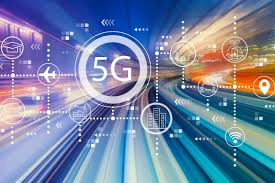The advent of 5G technology promises to revolutionize connectivity, enabling faster speeds, lower latency, and greater network capacity than its predecessors. Beyond enhanced mobile broadband, 5G holds the potential to transform industries, enable new applications, and reshape societal interactions. This article explores the implications of 5G technology on business operations, consumer experiences, and societal trends.
Enhanced Connectivity and Speed
- Faster Data Transmission: 5G networks deliver significantly faster data speeds compared to 4G LTE, enabling seamless streaming of high-definition content, real-time video conferencing, and rapid file downloads.
- Low Latency: Reduced latency in 5G networks facilitates instant responsiveness for applications requiring minimal delay, such as autonomous vehicles, remote surgeries, and industrial automation.
Impact on Business Operations
- IoT and Smart Cities: 5G supports a massive number of connected devices, enabling the proliferation of IoT applications in smart cities, smart grids, and industrial IoT (IIoT) for improved efficiency, resource management, and predictive maintenance.
- Industry 4.0: Accelerating the adoption of smart manufacturing technologies, 5G enables real-time monitoring of production processes, robotic automation, and augmented reality (AR) for training and maintenance in smart factories.
Consumer Experiences and Applications
- Augmented Reality (AR) and Virtual Reality (VR): Enhanced by 5G’s high-speed, low-latency capabilities, AR and VR applications offer immersive experiences in gaming, education, virtual tourism, and remote collaboration.
- Telemedicine and Healthcare: 5G enables high-resolution video consultations, remote patient monitoring, and surgical robotics, improving access to healthcare services, especially in underserved areas.
Societal Impacts and Connectivity Trends
- Digital Inclusion: 5G expands internet access to rural and remote regions, bridging the digital divide and enabling broader participation in the digital economy.
- Smart Transportation: Facilitates real-time traffic management, connected vehicle communications, and autonomous driving technologies, enhancing safety, efficiency, and reducing traffic congestion.
Challenges and Considerations
- Infrastructure Investment: Deploying 5G infrastructure requires significant investment in new base stations, small cells, and fiber optic networks to support high-speed connectivity and coverage.
- Security and Privacy: Securing 5G networks against cyber threats, ensuring data privacy, and adhering to regulatory requirements (e.g., GDPR) are critical considerations for businesses and policymakers.
Future Directions and Innovation
- Edge Computing: Integrating edge computing with 5G networks reduces latency and enhances data processing capabilities for real-time applications in IoT, AI, and immersive experiences.
- 5G-Enabled Services: Innovations in 5G-enabled services such as real-time language translation, smart agriculture, environmental monitoring, and public safety applications continue to expand possibilities across sectors.
Conclusion
5G technology represents a paradigm shift in connectivity, unlocking new opportunities for businesses, transforming consumer experiences, and shaping societal interactions. As organizations embrace the capabilities of 5G networks, they must navigate challenges related to infrastructure deployment, cybersecurity, and regulatory compliance to harness its full potential. Collaboration among stakeholders—telecom providers, technology developers, government agencies, and businesses—is essential to drive innovation, ensure equitable access, and leverage 5G technology for sustainable economic growth and societal advancement.
